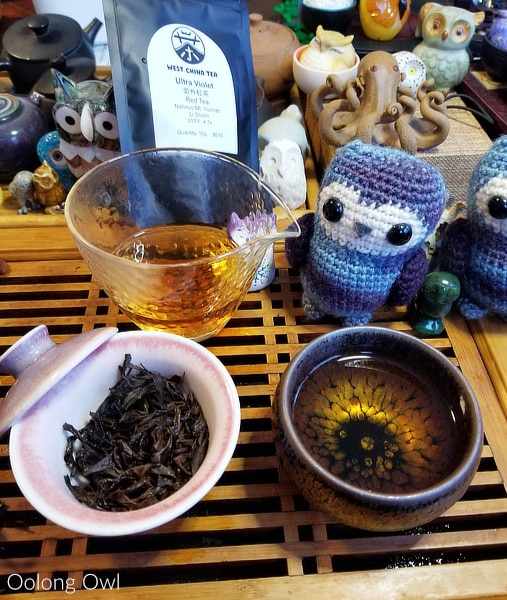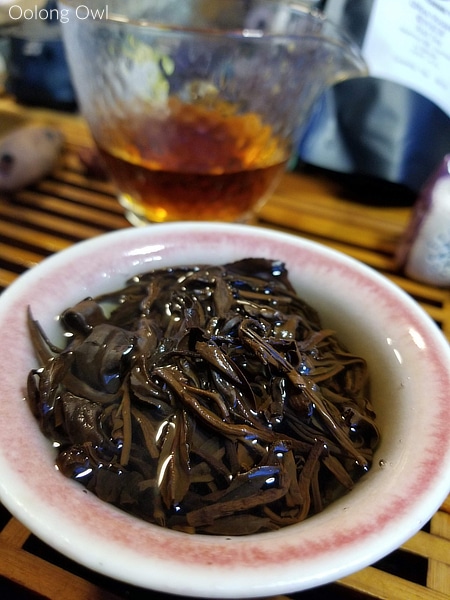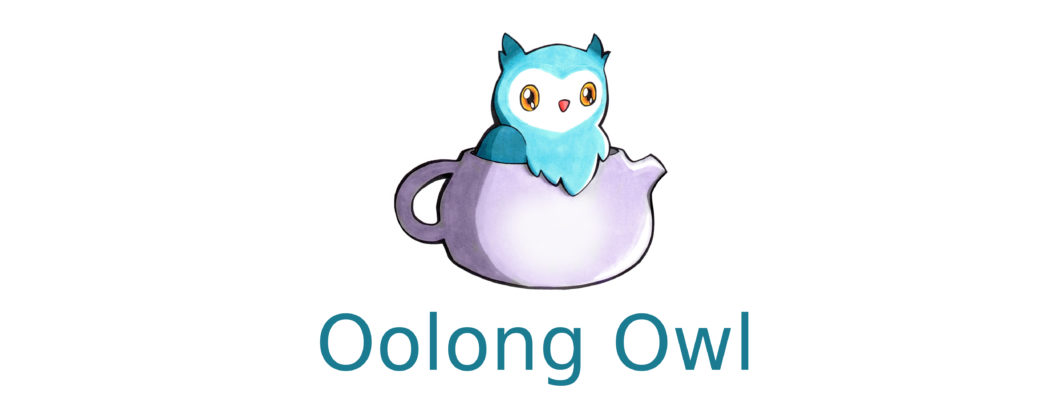I got a pile of hong cha from West China Tea, a vendor in Austin, Texas. Feeling like black teas, I found a pair of black teas from Nannuo mountain! Similar to my previous review of West China Tea, this is tea from farmer Li Shulin.

Bama Hong Cha from West China Tea
Bama Hong Cha is sun dried black tea made with tea leaves usually reserved for puer. The leaves have some gold tips and thin pieces with a sour cherry scent.

I used a preheated thick gaiwan, 1 gram to 15ml leaf to vessel ration, steeped in boiling water. After a rinse, the leaves smell like tobacco with a hint of cherries.
First, Second, and Third Infusion: Bama Hong Cha starts off light and sweet, tasting like black cherries. It slowly shifts to honey, wood, and then tobacco. The more I sip, the more it goes to cherry wood, giving off a dark and mysterious vibe. The aftertaste is deep woodsy with a bit of earth, along with a slick mouthfeel.

Fourth, Fifth, Sixth, Seventh, and Eighth Infusion: The tea broth turned deep mahogany.

Bama Hong Cha has embraced the woodsy, tasting of strong cherry wood, earth, with a softly sour astringent finish. As it steeps it gets more aggressively earthy, zesty greens, and astringent enough to tickle the back of the throat.
Ninth Infusion: The final infusion tastes of driftwood and minerals, with a chest thumping abrasive earth finish.
Bama Hong Cha is quite fruity and complex, evolving nicely in gongfu style being both light and sweet to dark and aggressive. It resteeped insanely well for a black tea and I likely could get more with a teapot. This red tea is not too astringent, which is a plus. I could see this tea as excellent drinking for a special occasion.
West China Tea’s Ultra Violet Hong Cha
In contrast to the other sun dried Nannuo black tea, Ultra Violet is of purple leaf material. The leaves have a plummy and grape scent. After a rinse, the leaves emit a sweet berry jam scent.

First, Second, and Third Infusion: Ultra Violet starts off tasting soft with caramelized sugary notes. Quickly, astringency sets in drying off the surface of my tongue with efficiency. As the tea opens up, it reveals stronger plum, blackberry notes that linger a bit after drinking. The mouthfeel is balmy and smooth too.

Fourth, Fifth, and Sixth Infusion: Ultra Violet continues to be smooth to drink until the astringency dries up the tongue. In these infusions, the tea is shifting woodsy but still light caramel and dark fruits. This tea also has that chest-thumping feeling of a finish, like swallowing a brick, similar to Bama Hong Cha.
Seventh, Eighth, and Ninth Infusion: The long infusions here change the hong cha to a lightly tart blackberry with a bit of wood and minerals. Despite the late infusions, Ultraviolet still has a smooth and balmy texture. The astringency has grown to dry out the back of the throat. The final infusions slip to lightly fruity. Similar to the previous tea, I feel I could have gotten another infusion or two with a teapot.

There is energy in this tea too, I’m feeling a bit buzzed and fluff brained. By the end of the session, I was feeling dopey-eyed and ready for snacks.
West China Tea’s Ultra Violet is sweet, light, and fruity, yet dark. It has astringency throughout the entire session, but if you are okay with that (or want to taste astringency done right), this is a lovely consistent tea.
Out of the two, I prefer the Bama Hong Cha for the complexity, but the consistency and buzz from Ultra Violet is fantastic too. Both teas resteep generously, smooth with excellent texture and feel.
(teas provided for review)






